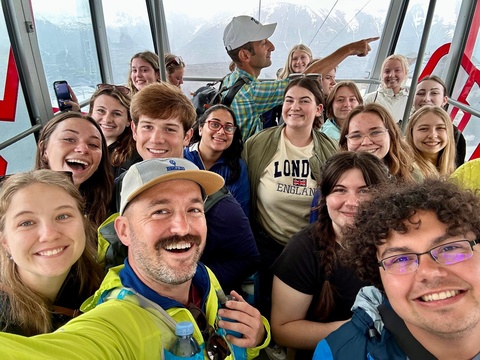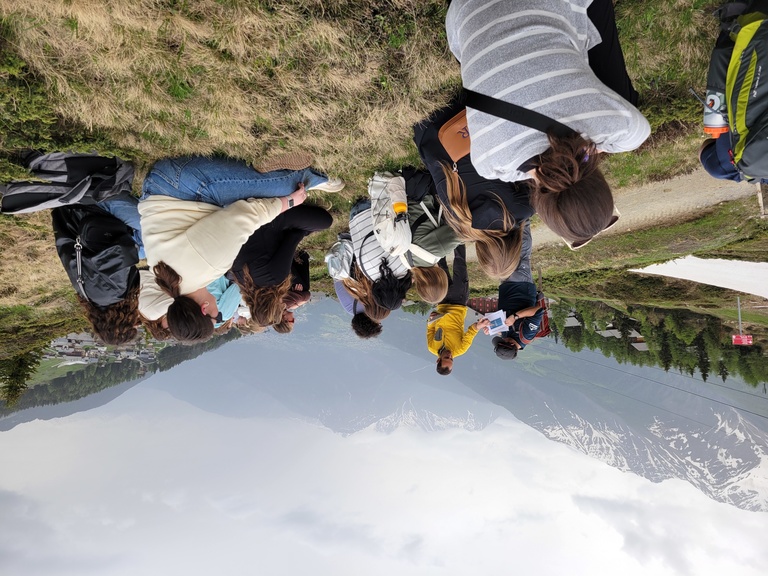By Emily Delgado
Students in the College of Liberal Arts and Sciences visited Europe over the summer as part of an experiential learning course that demonstrated real-world applications of chemistry and sustainability.
The course, “Sustainable Chemistry Along the Rhine,” is taught by Adam Brummett, associate professor in the Department of Chemistry, and Stratis Giannakouros, Director of the Office of Sustainability and the Environment. Students learned about climate change, heard how cities across Europe are implementing sustainable resources, and experienced the connection between chemistry and sustainability.

“The initial purpose of the course was to open the door for STEM students to look at science from a more global perspective,” Brummett said last year. “So often we look at chemistry and science locally and nationally and don’t realize how much is being done in other places.”
One of the places students visited was the beautiful mountains and glaciers scattered across Europe, which were real-life examples of why it is important to push for sustainable development.
“The visit to the glacier and the class discussions we have on top of the mountain really crystallizes the concepts we have been learning and the need for action that is seen in many of our visits to industries and labs,” Brummett said.
This year, students from a wide range of majors spent time in Zurich, the Aletsch Glacier, Basel, and Freiburg.
“One thing I’ve learned in classes that helped me understand the differences we discovered abroad is how sustainability and sustainable chemistry are perceived by the communities, and the impact that governments have on that perception and ideology,” said Ella Kuper, a second-year student studying environmental planning.
During the visit to Germany, students saw firsthand the country’s sustainable policy strategies. Kuper said her only exposure before the trip had been in a textbook.
“Being able to explore and tour real-life examples expanded my knowledge to a whole new realm of sustainable practices within business and cities,” Kuper said.
EmmaJean Roling, a third-year student senior studying environmental science, said the connection between chemistry and sustainability was obvious from the start of the course.
On a visit to the Vauban district in Freiburg, Germany, which is a global leader in sustainable building development, Roling said she was able to see the connection between chemistry and sustainability in real life.
“Some of their buildings are built using PCH, phase-change material. This means less electricity is required to cool the building, so it reduces carbon dioxide emissions from electricity generation,” Roling said. “Without understanding this chemical process, the sustainability benefits would not have been realized, proving the interrelatedness of these two disciplines.”
The collaboration between different students of different academic backgrounds helped make the discussions even more meaningful, said Kuper.
“I think this is what sets the program apart from others, the inclusion of different backgrounds allows for so much personal and academic growth in a differing environment than your typical classroom setting,” Kuper said.


